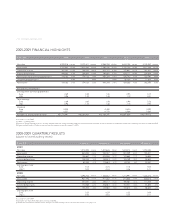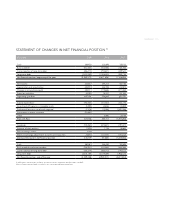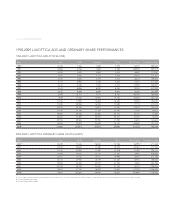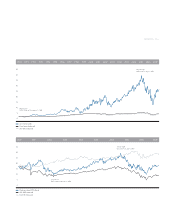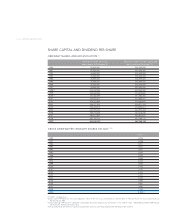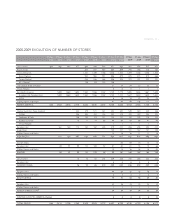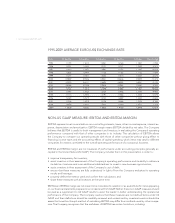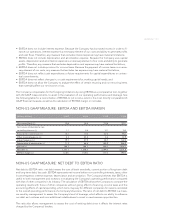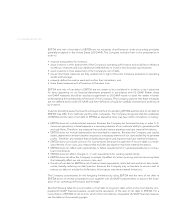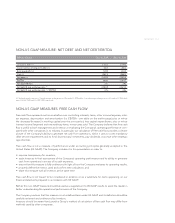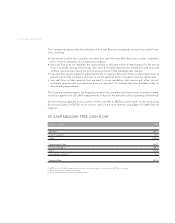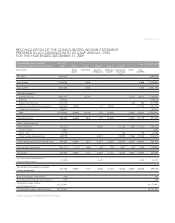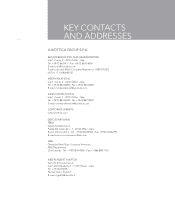LensCrafters 2009 Annual Report Download - page 122
Download and view the complete annual report
Please find page 122 of the 2009 LensCrafters annual report below. You can navigate through the pages in the report by either clicking on the pages listed below, or by using the keyword search tool below to find specific information within the annual report.> 120 | ANNUAL REPORT 2009
EBITDA and ratio of net debt to EBITDA are not measures of performance under accounting principles
generally accepted in the United States (US GAAP). The Company includes them in this presentation in
order to:
• improve transparency for investors;
• assist investors in their assessment of the Company’s operating performance and its ability to refinance
its debt as it matures and incur additional indebtedness to invest in new business opportunities;
• assist investors in their assessment of the Company’s cost of debt;
• ensure that these measures are fully understood in light of how the Company evaluates its operating
results and leverage;
• properly define the metrics used and confirm their calculation; and
• share these measures with all investors at the same time.
EBITDA and ratio of net debt to EBITDA are not meant to be considered in isolation or as a substitute
for items appearing on our fi nancial statements prepared in accordance with US GAAP. Rather, these
non-GAAP measures should be used as a supplement to US GAAP results to assist the reader in better
understanding the operational performance of the Company. The Company cautions that these measures
are not defi ned terms under US GAAP and their defi nitions should be carefully reviewed and understood
by investors.
Investors should be aware that Luxottica Group’s method of calculating EBITDA and the ratio of net debt to
EBITDA may differ from methods used by other companies. The Company recognizes that the usefulness
of EBITDA and the ratio of net debt to EBITDA as evaluative tools may have certain limitations, including:
• EBITDA does not include interest expense. Because the Company has borrowed money in order to fi-
nance our operations, interest expense is a necessary element of our costs and ability to generate profits
and cash flows. Therefore, any measure that excludes interest expense may have material limitations;
• EBITDA does not include depreciation and amortization expense. Because the Company uses capital
assets, depreciation and amortization expense is a necessary element of our costs and ability to generate
profits. Therefore, any measure that excludes depreciation and expense may have material limitations;
• EBITDA does not include provision for income taxes. Because the payment of income taxes is a neces-
sary element of our costs, any measure that excludes tax expense may have material limitations;
• EBITDA does not reflect cash expenditures or future requirements for capital expenditures or contrac-
tual commitments;
• EBITDA does not reflect changes in, or cash requirements for, working capital needs;
• EBITDA does not allow the Company to analyze the effect of certain recurring and non-recurring items
that materially affect our net income or loss; and
• the ratio of net debt to EBITDA is net of cash and cash equivalents, restricted cash and short-term invest-
ments, thereby reducing our debt position. Because the Company may not be able to use our cash to
reduce our debt on a dollar-for-dollar basis, this measure may have material limitations.
The Company compensates for the foregoing limitations by using EBITDA and the ratio of net debt to
EBITDA as two of several comparative tools, together with US GAAP measurements, to assist in the evalu-
ation of our operating performance and leverage.
See the following table for a reconciliation of net debt to long-term debt, which is the most directly com-
parable US GAAP fi nancial measure, as well as the calculation of the ratio of net debt to EBITDA. For a
reconciliation of EBITDA to net income, which is the most directly comparable US GAAP fi nancial measure,
see the table on the preceding pages.




